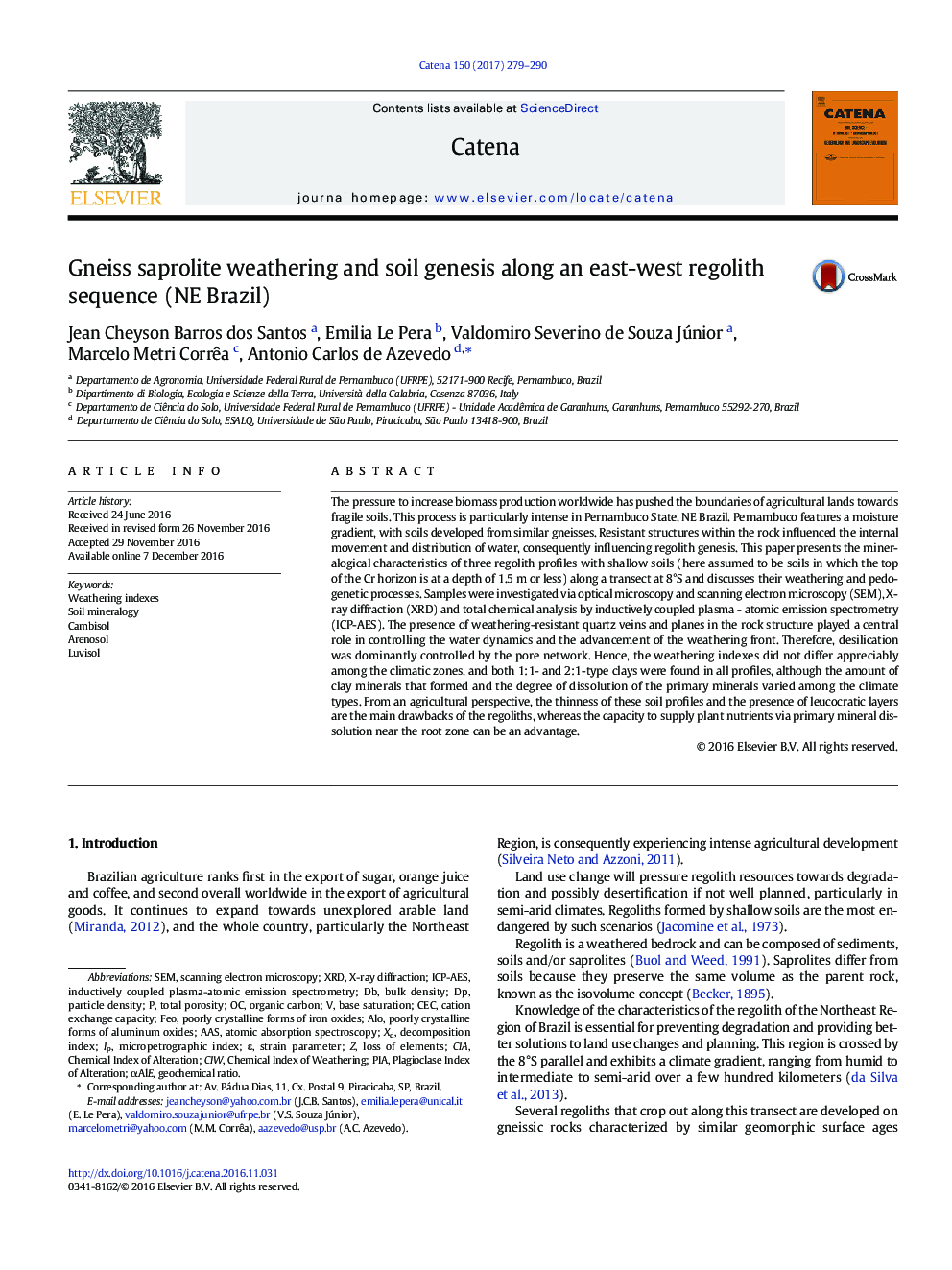| Article ID | Journal | Published Year | Pages | File Type |
|---|---|---|---|---|
| 6407673 | CATENA | 2017 | 12 Pages |
â¢Veins in the rock structure control the advancement of the weathering front.â¢Pedogenesis advances in saprolite gradual transitions and is halted in abrupt ones.â¢Same type of clays is present in all profiles, but in varying amount.
The pressure to increase biomass production worldwide has pushed the boundaries of agricultural lands towards fragile soils. This process is particularly intense in Pernambuco State, NE Brazil. Pernambuco features a moisture gradient, with soils developed from similar gneisses. Resistant structures within the rock influenced the internal movement and distribution of water, consequently influencing regolith genesis. This paper presents the mineralogical characteristics of three regolith profiles with shallow soils (here assumed to be soils in which the top of the Cr horizon is at a depth of 1.5 m or less) along a transect at 8°S and discusses their weathering and pedogenetic processes. Samples were investigated via optical microscopy and scanning electron microscopy (SEM), X-ray diffraction (XRD) and total chemical analysis by inductively coupled plasma - atomic emission spectrometry (ICP-AES). The presence of weathering-resistant quartz veins and planes in the rock structure played a central role in controlling the water dynamics and the advancement of the weathering front. Therefore, desilication was dominantly controlled by the pore network. Hence, the weathering indexes did not differ appreciably among the climatic zones, and both 1:1- and 2:1-type clays were found in all profiles, although the amount of clay minerals that formed and the degree of dissolution of the primary minerals varied among the climate types. From an agricultural perspective, the thinness of these soil profiles and the presence of leucocratic layers are the main drawbacks of the regoliths, whereas the capacity to supply plant nutrients via primary mineral dissolution near the root zone can be an advantage.
